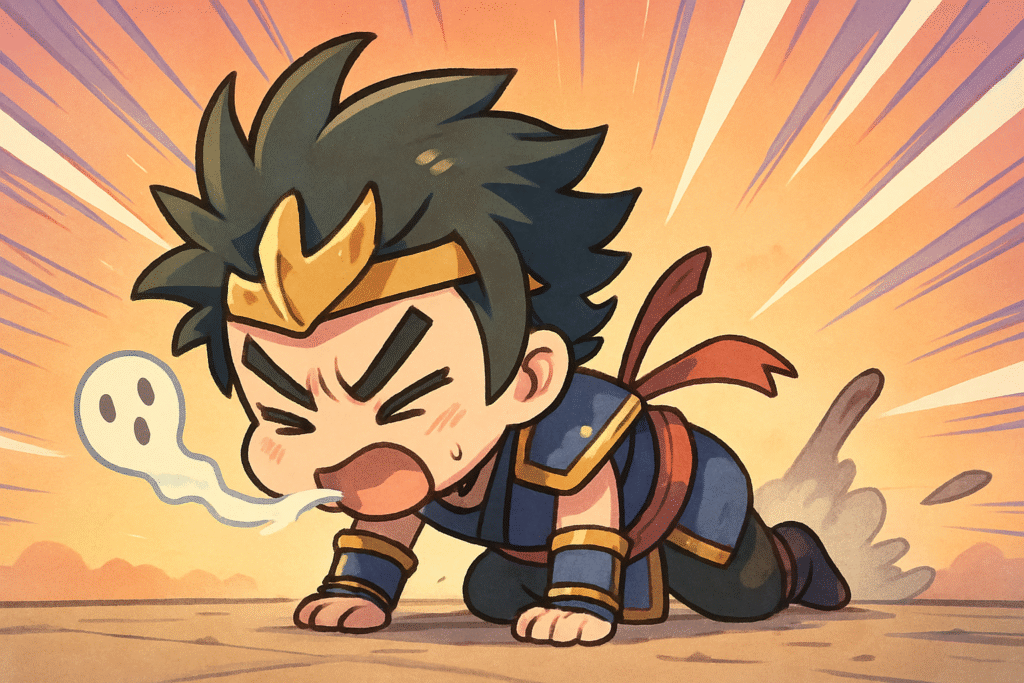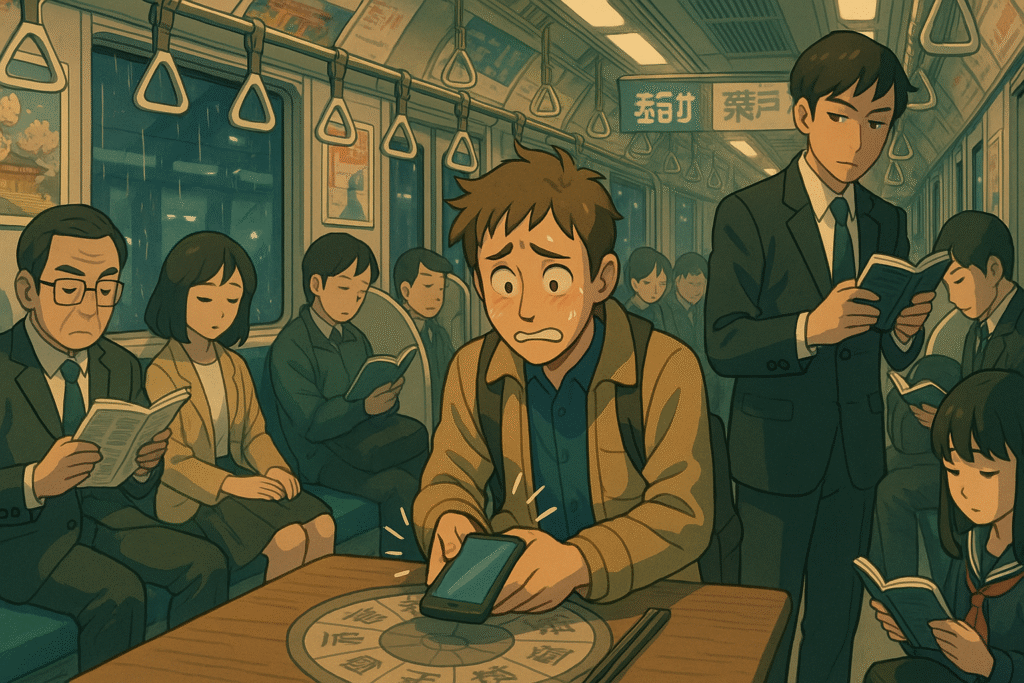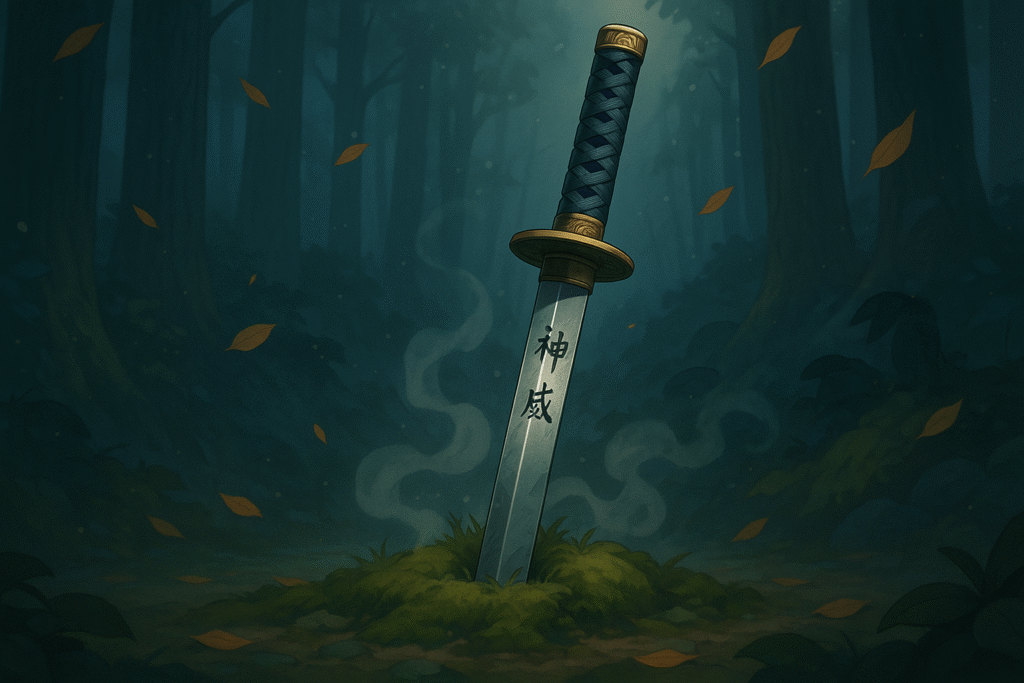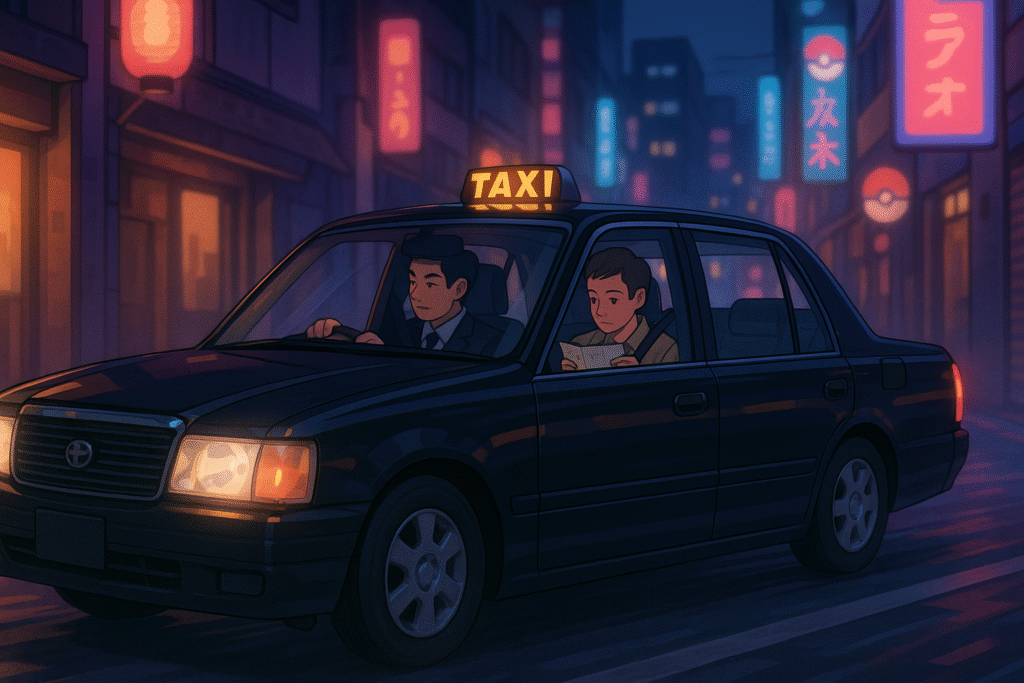Have you ever watched an anime where a character’s nose suddenly erupts in a fountain of blood, or their eyes transform into perfect X shapes? These peculiar visual cues are part of anime’s rich emotional language that can confuse newcomers but delight seasoned fans. In this comprehensive guide, we’ll explore the fascinating world of anime emotions and visual symbols that make Japanese animation uniquely expressive.
The Secret Language of Anime Emotions
Anime has developed a distinctive visual vocabulary to convey character emotions that goes beyond realistic facial expressions. This symbolic language allows creators to express complex feelings instantly, often with comedic effect. Understanding these visual cues enhances your anime viewing experience and connects you to Japanese cultural storytelling traditions.
Interested in diving deeper into Japanese culture? Check out our free guides to learning Japanese that reveal the fascinating connections between language and visual expression!
Common Anime Emotional Symbols Explained
Instantly Recognizable Anime Emotions
Speed Lines
Those streaking lines that appear behind characters aren’t just for show—they indicate movement and urgency. Modern anime uses these strategically, either to save on animation budgets or to deliberately reference manga’s static medium. The density and direction of speed lines tell us about the intensity and type of motion occurring.
Abstract Background Patterns
When the background suddenly transforms into swirls, lines, or color blocks, it’s emphasizing a character’s emotional state. Red backgrounds typically indicate anger or embarrassment, while blue or purple tones suggest depression or shock. These instant environment changes create an emotional shorthand that’s immediately understood by viewers.
Eye Transformations
The eyes truly are windows to the soul in anime! Eyes expand to show surprise, narrow for suspicion, and form upward arcs when happy. Some anime emotions are conveyed entirely through eye symbols:
- Sparkly eyes with white dots: excitement or admiration
- Spiral eyes: confusion or dizziness
- X-shaped eyes: unconsciousness or figurative “death”
- Disappearing eyes (replaced by straight lines): depression or extreme sadness
Giant Teardrops
When characters release waterfalls of tears, it’s typically played for comedy rather than genuine sadness. The size of tears directly corresponds to the intensity of emotion, making this one of anime’s most hyperbolic expressions.
Want to explore Japan’s culture?
Discover Japan’s rich culture, traditions, and hidden gems with our expertly crafted guides. Get insider tips on travel, food, and history. All for free!
Puzzling Anime Emotions for Newcomers
The Popping Vein
That cross-shaped vein that appears on a character’s forehead or fist is called a “cruciform popping vein” and represents irritation or anger. The more veins that appear, the more intensely frustrated the character feels—a visual representation of “being wound up.”
The Mysterious Sweat Drop
Perhaps one of anime’s most iconic symbols, the large sweat drop represents anxiety, confusion, or embarrassment. When combined with a blush, it indicates social discomfort, and when paired with shocked eyes, it conveys disbelief or a “what is this?” reaction.
Cat Mouth and Fangs
When a character (especially female) suddenly displays a cat-like mouth or growing fangs, they’re feeling mischievous or “catty.” This visual literally interprets the English expression and gives characters a playful, slightly dangerous quality.
Nose Bubble and Ghost
The expanding and contracting bubble from a sleeping character’s nose is Japan’s equivalent of “ZZzzz” in Western comics. Similarly, when a small ghost-like figure emerges from a character’s mouth, they’re experiencing extreme shock—not actual death, but rather being “scared to death.”
The Most Bewildering Anime Emotions
Nosebleeds
The infamous anime nosebleed represents sexual arousal or perverted thoughts. This unusual symbol may have originated from the Japanese parental warning that “thinking dirty thoughts will give you a nosebleed.” The severity of the nosebleed often indicates the intensity of the character’s reaction.
Face-Falling
When characters dramatically fall face-first to the ground (often from a standing position), they’re responding to something ironic, absurd, or a terrible pun. This is anime’s equivalent of a “facepalm” taken to extreme proportions.
Colored Face Lines
Vertical or horizontal lines appearing over a character’s face indicate specific emotional states:
- Red vertical lines: anger or embarrassment
- Blue wavy lines: awkwardness or depression
- Purple tinting: shock or nausea
- Horizontal lines: sudden attention or focus
Chibi Transformation
Perhaps most jarring for newcomers is when characters abruptly transform into small, childlike versions of themselves with exaggerated features. These “chibis” (meaning small or short) signal a comedic break or highlight silliness in an otherwise serious narrative. The drastic style change serves to reset the emotional tone before returning to the main storyline.
Anime Emotions in Cultural Context
These visual symbols aren’t random—they evolved from Japanese comic traditions and cultural expressions. Many directly visualize Japanese idioms (like being “catty”) or represent physical reactions (like increased blood pressure when angry) in exaggerated form.
As referenced in our article on Ryonen: The Female Zen Master, Japanese culture has long used visual shorthand to express complex emotions, from traditional art to modern manga. This visual economy allows creators to communicate volumes with simple symbols.
Similar to how our article on The Mirror of Matsuyama explores emotional connections through symbolic objects, anime uses visual cues as emotional mirrors that reflect inner states outwardly.
Why Anime Emotions Matter
Understanding anime’s visual language enriches your viewing experience, allowing you to catch subtle emotional nuances and jokes that might otherwise be missed. These symbols also create a shared vocabulary among anime fans worldwide, transcending language barriers through visual communication.
As anime continues to grow in global popularity, its unique emotional language influences other media, with Western cartoons and comics increasingly adopting elements of this visual style. What was once confusing becomes familiar, creating a cross-cultural visual dialogue that continues to evolve.
Frequently Asked Questions About Anime Emotions
What does a nosebleed mean in anime?
A nosebleed in anime represents sexual arousal or perverted thoughts. This visual cue is anime’s way of showing attraction in an exaggerated but less explicit manner.
Why do anime characters sometimes turn small and cute?
The transformation into “chibi” form signals a comedic moment or emotional shift, allowing serious characters to engage in silly behavior without breaking their established personality.
What do the different colored backgrounds mean in anime?
Background colors represent emotional states: red backgrounds indicate anger or embarrassment, blue suggests sadness or depression, and purple often represents shock or illness.
Why do anime characters’ eyes change shape?
Eye transformations instantly communicate emotional states—sparkly eyes show excitement, X-shaped eyes indicate unconsciousness, and disappearing eyes (replaced by lines) express extreme disappointment or depression.
What does the sweat drop symbol mean?
The large sweat drop is anime’s universal symbol for embarrassment, anxiety, or awkwardness. A single sweat drop communicates discomfort more efficiently than lengthy dialogue.
Understanding anime emotions enhances your appreciation of Japanese animation’s rich visual storytelling tradition. Whether you’re a new viewer confused by these symbols or a seasoned fan looking to deepen your knowledge, recognizing these visual cues connects you to the global community of anime enthusiasts who speak this unique emotional language.
Did you enjoy exploring anime’s visual language? Check out our related article on Akita: Japan’s Legendary Bear Hunting Dog to discover another fascinating aspect of Japanese cultural heritage!
Love Japan? Stay in the Loop!
Get the best of Japan straight to your inbox: language, culture & travel insights!




